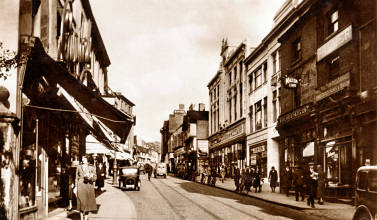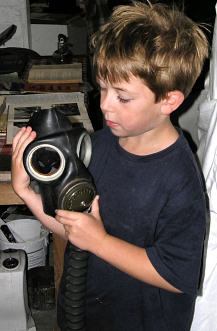|
Index...
|
 s previously stated, it was already acknowledged by 1934 that war was a possibility, and that in the event of such, Coventry would be a probable target.
s previously stated, it was already acknowledged by 1934 that war was a possibility, and that in the event of such, Coventry would be a probable target.

It was not long before preparations were being made, and on 29th January 1935 an ARP Sub-Committee was set up by the Council. However, in Coventry the Labour Party had not long been in power, and due to its pacifist leanings, positive action towards preparing for war was slow in coming. This attitude gradually changed, as it became clear that Hitler's threat was a serious one.

In addition to 412 ARP (Air Raid Precautions) wardens, (a quarter of whom would be posted in the city centre) many other organisations were required to cope with the terrible situations that were predicted to occur. Over 500 trained and equipped firemen were required, and nearly 1,000 medical staff needed, plus many more essential services, including telephone operators, first-aiders, repair teams and messengers.
Merely organising people was not the total answer though - physical changes were going to have to be made around the city, the most disruptive being the provision and digging of air-raid shelters. Large shelters were either built or provided in basements of many existing stores and factories, Owen Owen in Broadgate and Rudge works in Spon Street among them, some having the capacity to protect hundreds of people. These were built to a high standard, and survived well against the high explosive bombs, saving thousands of lives.
Anderson shelters were also provided for families, free for those on less than the average income, but initially there was, not surprisingly, a reluctance to take up the offer. As late as Spring 1939 people still resisted spoiling their gardens, many using the excuse that they would never be needed!


 omething that all citizens, regardless of age, were required to carry at all times, was a gas mask. Since the Great War there was a real fear of gas bombs being dropped, and much time and effort was spent (ultimately wasted, fortunately) on carrying out drills for quickly attiring oneself of these undesirable objects, including gas 'chambers' that a whole baby could be placed in.
omething that all citizens, regardless of age, were required to carry at all times, was a gas mask. Since the Great War there was a real fear of gas bombs being dropped, and much time and effort was spent (ultimately wasted, fortunately) on carrying out drills for quickly attiring oneself of these undesirable objects, including gas 'chambers' that a whole baby could be placed in.
As the expected war drew closer, evacuation was another heart-breaking feature planned for all large towns and cities. It officially began only two days before war broke out, but the uptake in Coventry was extremely low. Only about one in five eligible children were actually sent to safer places, and most of these returned within a few weeks when the expected bombing raids hadn't yet materialised. After June 1940, when Germany had taken over France, the evacuation strategy was re-thought, and children were sent to places farther from the south coast.
Website by Rob Orland © 2002 to 2025